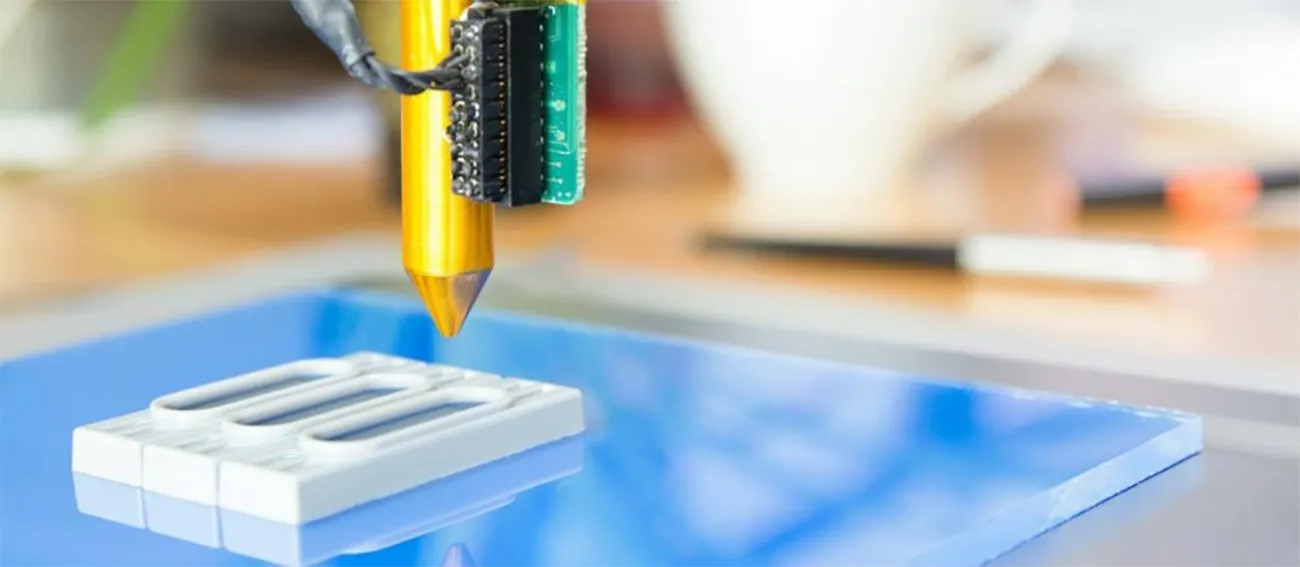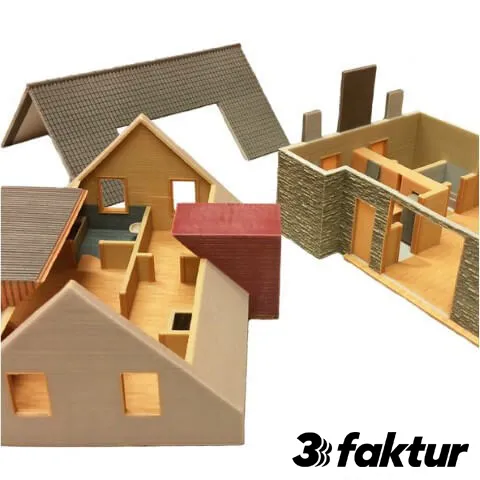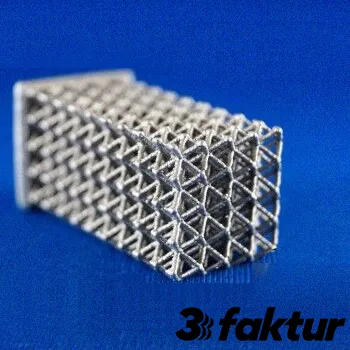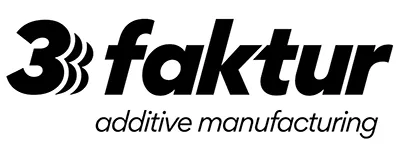
For several years now, the term 3D printing has been electrifying entire industries and many private users as well. 3D printing has evolved from a sometimes mocked niche market into a legitimate industry. Projections continue to indicate rapid growth. As of the beginning of 2018, the global 3D market (including 3D printers, materials, software, and services) is valued at around 13 billion US dollars. Market research firm IDC-Research expects the market to grow to over 30 billion dollars by the year 2020. Given the recent engagement of industrial giants like GE, Siemens, or HP in the market, the projection may prove to be too conservative.
But what lies behind the terms 3D printing or additive manufacturing? This post aims to shed some light on the terminology.




What Does 3D Printing or Additive Manufacturing Mean?
The special feature of 3D printing is that the workpieces/products are built layer by layer. Hence, the terms generative or additive manufacturing. This is the exact opposite of subtractive processes like turning or milling (abrasive processes) where an object is “carved out” of a material block.
Despite the similarity of the layered construction, there are significant differences between 3D printing processes. In summary, there are three essential principles:
- Material is extruded and then solidifies through cooling/chemical processes (e.g., FDM, chocolate printer, concrete printer, etc.).
- Liquid photopolymer is cured by UV light (e.g., Polyjet, Stereolithography).
- Material powder is selectively bound through heat or chemical process (e.g., Colorjet, HP Jet Fusion, Laser Sintering (SLS), Metal 3D Printing).
An overview of all 3D printing processes can be found in our article: Technological Approaches in 3D Printing.
Sie sehen gerade einen Platzhalterinhalt von Standard. Um auf den eigentlichen Inhalt zuzugreifen, klicken Sie auf den Button unten. Bitte beachten Sie, dass dabei Daten an Drittanbieter weitergegeben werden.
Weitere InformationenConcrete 3D Printing; Source: YouTube/TU-München
Sie sehen gerade einen Platzhalterinhalt von Standard. Um auf den eigentlichen Inhalt zuzugreifen, klicken Sie auf den Button unten. Bitte beachten Sie, dass dabei Daten an Drittanbieter weitergegeben werden.
Weitere InformationenPolyjet 3D Printing; Source: YouTube/Stratasys
Historical Development of 3D Printing
In the early 1980s, Stereolithography was developed by C. Hull. At the end of the 1980s, Laser Sintering and FDM printing were added. At the turn of the millennium, Objet (now Stratasys) introduced the Polyjet process to the market. Further processes, improvements, and variations have followed in recent years. The newest process (HP Multi Jet Fusion) was introduced in 2016 and has brought about new dynamics.
How 3D Printing Works
The process chain in 3D printing consists of four main steps:

1. Creating the 3D Model
The prerequisite for carrying out a 3D print is the presence of a digital 3D model. A 3D model is the digital representation of a physical object. Just as in 2D printing, an image or text file is required to print something, in 3D printing, a digital model is also necessary.
There are two ways to obtain a 3D model. A: You create the 3D model yourself (usually with CAD programs). B: You use a 3D scanner to obtain a digital representation of the original object. The 3D model is then usually available in one of the following formats:
- Mesh format (mesh model): Mesh models can be printed directly. The most commonly used file formats are STL (monochrome), OBJ (monochrome/color). But WRL/VRML or PLY (both color) are also frequently used. More information: The STL File Format and Its Importance for 3D Printing.
- CAD formats: Here, the most popular format is STP, but IGES is also occasionally used. CAD data is construction data and contains significantly more information than mesh files. Therefore, converting an STL to an STP is also very demanding (“reverse engineering”). More information on the STP format and the differences compared to the STL format can be found here: STP vs. STL.
An overview of all common formats in 3D printing can be found here: Overview of the Most Common 3D Printing File Formats.
2. Print Preparation
Before the actual 3D printing can begin, two more steps are required:
- Repair of the 3D Model: Sometimes, 3D models are flawed and require repair. This can be done by specific software on your own or by experts (e.g., using the online tool makeprintable.com).
- Immediate Print Preparation/Slicing: The slicing of the 3D model into print layers is usually done by the printer manufacturer’s software. Nowadays, there are also independent software options for private users (Cura, Simplify3D) or for industrial applications (Materialise Magics, Autodesk Netfabb). The immediate print preparation is carried out by the entity executing the 3D print. If you are 3D printing on your own, you’ll handle this step, and if you commission a 3D printing service (e.g., 3Faktur), they will take care of it.
3. 3D Printing
In the now over 30-year history of 3D printing, a variety of processes have been established. Depending on the process, 3D printing can take from several hours to a few days (depending on size and geometry). The fastest processes can achieve several centimeters per hour (e.g., CLIP by Carbon 3D), while others achieve only a few millimeters per hour (e.g., MCor’s paper-based printing systems).
4. Post-Processing
There are hardly any 3D printing processes that can do without post-processing (except for some FDM without support structures). The effort for post-processing varies significantly depending on the process and the part. The most elaborate post-processing is required for metal 3D printing (often involving machining processes).
3D Printing Processes and Materials
3D Printing Processes
By now, there is a confusing number of different 3D printers. For clarity, we have divided them into three groups:
- 3D Printers for Hobby Use: In this segment, FDM and SLA/DLP printers play a major role. Here, 3D printers are available for just a few hundred euros, as well as high-quality models priced at EUR 3,000 – 4,000. The quality of the printed objects is usually acceptable, but the reliability and process stability cannot be compared to industrial 3D printers.
- Semi-Professional Applications: In this segment, FDM and SLA/DLP printers also dominate. However, some laser sintering systems can be assigned to this category as well. The printers in this category already cost between EUR 5,000 and 25,000. These are often specialized printers (e.g., large-format FDM printers from BigRep) or 3D printers for the production of a limited number of objects (e.g., Formlabs Fuse).
- Industrial 3D Printers: This is where you will find the most powerful and high-quality 3D printers. In terms of accuracy, throughput, and reliability, these printers achieve top performance. Popular 3D printers in this category are HP’s Multi Jet Fusion 3D printers, EOS’s laser sintering systems, or Stratasys’s Fortus printers. Specialized systems such as 2-Photon Polymerization for the production of sub-nanostructures also play a role here. Prices for 3D printers in this category usually range from EUR 150,000 – 500,000 (for plastic systems). For large-scale metal printers and other specialized systems, costs can exceed EUR 1 million.
Materials
The most commonly used materials are plastics, metals, or ceramics. There are still many other materials, and new ones are also being introduced, but these are often niche products.
Plastics: Here, a distinction can be made between thermoplastics and resins.
- Thermoplastics: These are physically stable, durable plastics (e.g., ABS, Polyamide, Polycarbonate, Polyimide, Polyester) that are also used in industrial applications. Processes working with thermoplastics include HP Jet Fusion, SLS, and FDM.
- Resins (Acrylics/Epoxides): They offer high resolution and are therefore well-suited for prototyping and model building. However, they may have weaknesses in technical applications. Processes using resins include Polyjet or Stereolithography and DLP.
Metals: In the field of metal 3D printing, a variety of materials and alloys have been established. The most important ones are steel, aluminum, and titanium.
Ceramics: These materials are gaining importance in 3D printing, but currently (as of 2018), the printing possibilities are still limited. The Israeli company XJET introduced a powerful ceramic printing system in 2017.
Other Materials: In addition to the above-mentioned material classes, there is a growing selection of “special materials.” These range from gypsum, concrete/cement, chocolate, pasta dough to living cells and biomaterials. The further development in this area is unpredictable, as additive manufacturing has application possibilities in almost all areas.
Applications
Since 3D printing encompasses all layer-by-layer building processes, its field of application is very broad. It is essential to understand that 3D printers manufacture individual components, not complete products. Almost all products consist of numerous components. 3D printers can produce individual parts from plastics, metals, or ceramics, but not complex electronics, light sources, or precision mechanics/optics.
In the industrial sector, production mainly focuses on housing components, structural parts (e.g., brackets, mechanical parts, handles), and tools (molds, fixtures, grippers). Practical examples include housing for hearing aids, hinges for aircraft doors (with lightweight structures), machine housing for low-volume production (e.g., analytical devices, specialty machines), and production aids (especially fixtures).
Future Outlook
A reliable forecast for this rapidly evolving market is difficult. However, some scenarios and trends are conceivable.
- Extreme Scenario with Maximum Disruption – Everyone Produces at Home: The most disruptive but also the least likely scenario in the near future is a 3D printer capable of processing a wide variety of materials/classes (possibly simultaneously) with high precision. This would allow for the printing of mechanisms or even circuits. If such a 3D printer were available in a compact format and at an acceptable price for private customers, the impact on many industries would be profound.
- Model Desktop Printer & Large-Scale Printing Services: A more likely scenario is the one currently developing. Compact 3D printers enable hobby users and engineers to print everyday items, workshop supplies, or prototypes. For industrial customers with high demands for accuracy, quality, and large production quantities, professional 3D printing services will offer opportunities to benefit from the speed and cost efficiency of 3D printing.
- Incorporation of 3D Printing into Production: The trend is moving from rapid prototyping toward rapid manufacturing. This is already impacting existing production chains. The customization of products will increase further as changes/configurations to a product can be implemented within a day. As a result, product life cycles will also be shortened, as production can start (and be modified) without waiting times.
- Trend of Decentralizing Production: The trend is also moving towards regional production, which reduces transportation routes.

About 3Faktur: 3Faktur specializes in 3D printing, rapid prototyping, and rapid manufacturing. We utilize HP’s Multi Jet Fusion technology and offer various materials for prototyping and series production. If you have any questions about your project, feel free to contact us.
